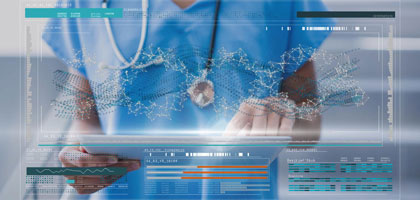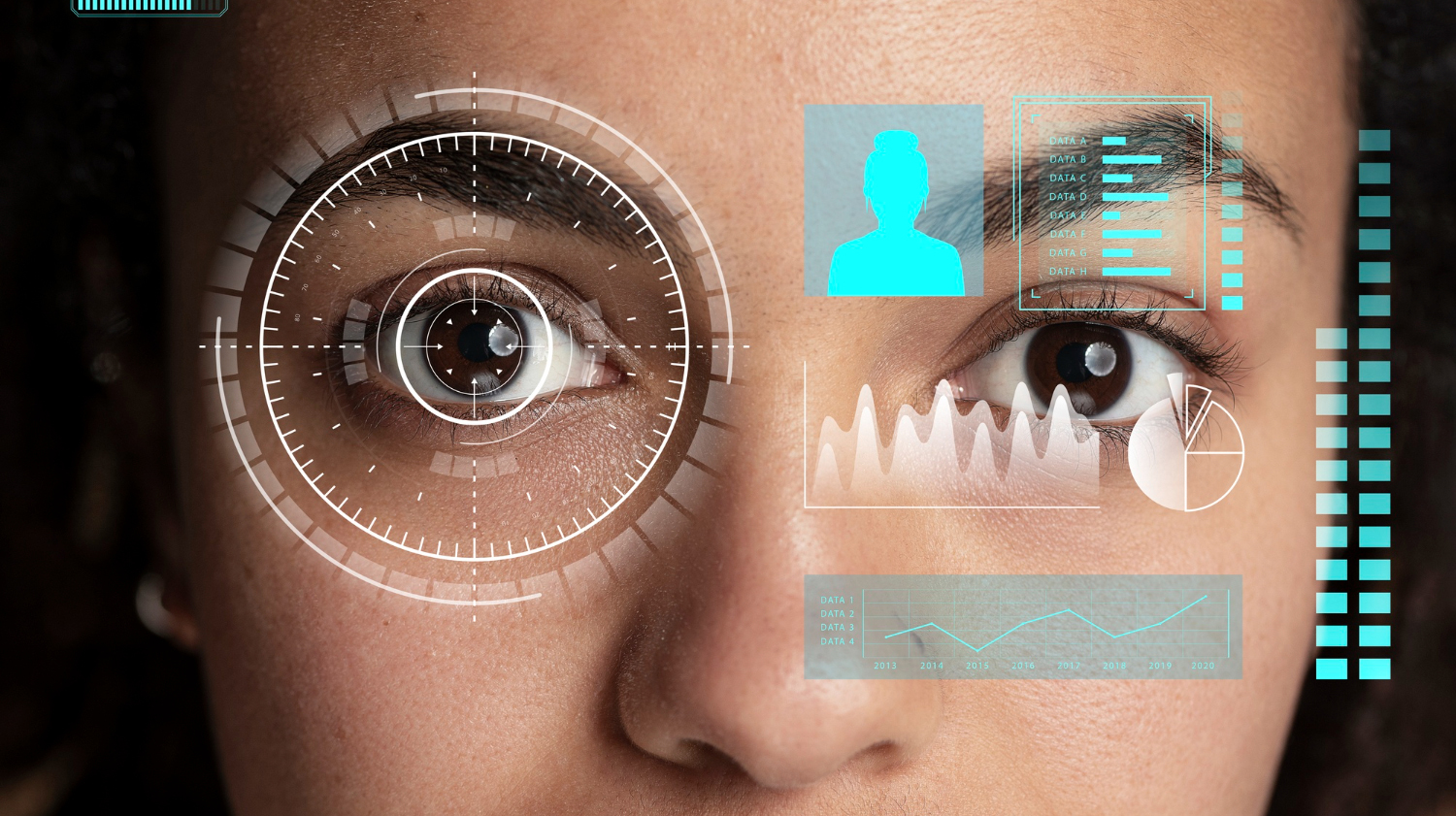
Blog
Empowering Healthcare IT: Navigating Data Identification, Standardization and Quality
Imagine a healthcare system with seamless patient information flow across all healthcare facilities and research institutions by eliminating the need to piece together fragmented medical records. What was once merely a vision has become tangible goals for a data-driven healthcare system. Then, what factors have elevated data to such a critical priority?
Clean and consistent information across healthcare IT systems offers many benefits, most importantly, improved patient care, proactive population health management and groundbreaking research. Data standardization empowers healthcare professionals to analyze trends in data, facilitating progress toward objectives. This way, healthcare professionals can collaborate to identify at-risk populations and accelerate prevention care and new treatment options through a complete picture. The healthcare ecosystem can revolutionize healthcare delivery through collaboration and efficiency by utilizing this complete picture, leading to exceptional quality care for everyone.
Still, this data utopia needs to handle a challenge: healthcare interoperability. Because electronic health record (EHR) systems can speak different languages, healthcare facilities often need more cohesive and consistent data, reducing collaboration and patient engagement. This is where global organizations like Health Level Seven (HL7) come in. It has identified widely adopted interoperability standards to bridge the information gap between disparate systems.

As Tiga, we know there should be a way to build interoperable healthcare systems, ensuring data consistency for every healthcare professional and facility. Our dedicated healthcare IT solutions address interoperability challenges by delivering identified, standardized and high-quality data. Accordingly, we can build bridges for a future where healthcare IT truly designates better care for all.
In this blog, we will examine all these vital aspects for guiding the dynamic world of healthcare data. We will begin firstly by exploring global initiatives in data standardization regulations. Then, we will analyze Tiga products such as FHIR Stack, Terminology Server and Enterprise Master Patient Data Index (EMPI) along with their benefits.
Global Efforts Towards Data Standardization
The global healthcare landscape suffers from a silent data silo crisis. Data silo refers to the situation where different teams within an organization or national-scale health system hold their own sets of data in isolation. Thus, patient information – a treasure for improved care and research – is often scattered across a fragmented ecosystem of independent IT systems. Picture a patient's medical history as a puzzle spread across different rooms; piecing them together for a complete picture is burdensome. Plus, it creates inefficiencies and risks as follows:
- Duplicate Medical Records: Patients may have multiple, even conflicting, records due to inconsistent data entry across IT systems. This can lead to confusion, errors and delays in diagnosis or treatment.
- Incomplete Information: Healthcare professionals cannot completely view their patients' medical histories and crucial details like allergies, medications, or past diagnoses. This can reduce the quality of care and make healthcare decisions difficult.
- Obstacles to Healthcare Research: Fragmented data makes it time-consuming for researchers to analyze large datasets effectively. The key to the efficiency of healthcare research is high-quality and unified data. This way, the need for more budget and time is reduced.
Recognizing these challenges, governments and healthcare IT organizations around the world are taking a stand. This stand aims to create a common language for healthcare data, allowing seamless exchange of information between disparate systems. Thus, the puzzle pieces may finally align, forming a complete picture of a patient's health. It's time to review IT acts to understand this need more clearly.

Health Level Seven International (HL7)
Health Level Seven International (HL7) is a crucial player in this data standardization effort. This non-profit organization has created healthcare data exchange standards since 1987 with over 1,600 members from 50 countries. They built the architecture of industry-wide standards like Fast Health Interoperability Resources (FHIR).
HL7's FHIR data model facilitates healthcare data exchange by simplifying implementation while ensuring data integrity, leveraging existing models for a consistent and strong mechanism. It is like a translator enables disparate systems to 'speak the same language,' regardless of their internal structures. Correspondingly, its benefits go beyond just data exchange by enhancing patient care and research.
By fostering global efforts towards data standardization, the healthcare industry lays the foundation for a future where information empowers better and more efficient healthcare for everyone. As Tiga, we are pleased to be one of the most influential supporters of this global effort and to move healthcare interoperability forward with our ever-evolving solutions.
Integrating the Healthcare Enterprise (IHE) and Beyond
Integrating the Healthcare Enterprise (IHE) is an initiative that empowers healthcare professionals by ensuring secure and seamless access to health information. By promoting the coordinated use of data standards like HL7, IHE develops workflow-based solutions that support smooth communication between different healthcare IT ecosystems. In simpler terms, they create a common language for all these IT systems through defined use cases, eventually bringing better treatment outcomes.
For better healthcare systems, many other institutions are working to implement data standards and achieve better patient care results. Let's briefly look at the main ones:
- European Union (EU): The European Commission is leading several initiatives on e-health and digital health in Europe. These include organizations such as EuroRec (European Institute for Health Records), which support cooperation between EU countries on standards and health information exchange.
- Asia eHealth Information Network (AeHIN): Operating in Asia, AeHIN is a network that promotes collaboration and information sharing in health information technologies at the regional level.
- African Centre for eHealth Excellence (Acfee): Operating in Africa, Acfee aims to support capacity building and regional collaboration in health information technologies.
- National E-Health Transition Authority (NEHTA): It was established as a joint initiative between the Australian Government and territory governments to identify and develop the necessary foundations for electronic health.
- Open EHR: This non-profit organization publishes standards for electronic health records (EHR) and goes beyond just technical parts. By providing both the technical foundation and clinical models, Open EHR ensures lifelong, patient-centric and future-proof data for better clinical care.
- Digital Imaging and Communications in Medicine (DICOM) Standards: DICOM sets the global standard for medical images and related information. It is the international standard for medical imaging information. It ensures consistent format and data quality for the billions of images powering clinical care worldwide.
- The Sequoia Project: This independent advocacy group implements national-level interoperability solutions for health information exchange. The Sequoia Project gets electronic information to the right place at the right time.
![]()
Healthcare IT Regulations
Countries are increasingly taking steps to advance data quality and standardization in healthcare legislation and regulations, recognizing these standards' critical role in improving patient care and healthcare outcomes. In this context, regulations emerge as a crucial instrument for promoting the worldwide adoption of such interoperability technologies.
For instance, The 'Patient Matching and Transparency in Certified Healthcare IT Act of 2024' (MATCH IT) promotes healthcare interoperability by addressing patient misidentification. It proposes a standard 'patient match rate' for enhanced data collection to link patients with correct medical records. Accordingly, it guides healthcare providers to adopt standardized electronic health records (EHRs).
Then, how can our solutions assist you in achieving regulatory compliance? Let's examine how we can address your specific regulatory compliance needs.
Our Solutions for Data Problems
How do healthcare professionals effectively utilize data standards and bridge the gap between fragmented data and actionable insights? This is where we step in, offering a suite of solutions specifically designed to address healthcare data problems. Let's take the opportunity to understand how we integrate different healthcare systems for the most impactful results.
FHIR Stack
Imagine a central nervous system for your healthcare data – that's what FHIR Stack aspires to be. Built on the HL7 FHIR standard, our FHIR Stack is a central data solution that integrates electronic health records of disparate systems. This interoperable platform empowers the development of new clinical solutions and integrated care models by streamlining data management and facilitating secure communication.
The FHIR Stack standardizes this data according to FHIR protocols, making it accessible for diverse applications like research. This empowers healthcare organizations to unlock the full potential of their information.
Moreover, enabling seamless data exchange and interoperability boosts cooperation among healthcare providers, researchers and technology developers. This collaborative environment drives the creation of advanced diagnostic tools, personalized treatment plans and population health management strategies, ultimately improving patient outcomes and reducing healthcare costs.

Terminology Server
Think of two physicians discussing a patient's case but with different terms. This lack of consistent terminology can lead to misinterpretations. We identified it and tackled this challenge head-on with our Terminology Server.
It addresses the challenge of managing and sharing healthcare data across different systems. Helping build terminology based on national and international standards ensures accurate coding for all health records.
It enables building flexible and up-to-date ValueSets based on standardized codes for simplified terminology creation and updates. Additionally, it brings accurate content mapping to promote seamless integration between FHIR servers and the terminology server. The service offers real-time updates to clinical terminologies and allows customization of ValueSets. Thus, healthcare professionals have access to the latest standards and can tailor them to specific needs.
The Terminology Server integrates healthcare data with disease classification and systematic data exchange standards like ICD10, ICD11, SNOMED CT and LOINC for better records and processes. This alignment promotes clarity, coherence and better patient care through a collaborative terminology ecosystem for healthcare professionals.
Enterprise Master Patient Data Index (EMPI)
Have you searched for information online and had multiple results for the same person? This is similar to the problem of inconsistent patient records in healthcare. The Enterprise Master Patient Index (EMPI) acts as a data detective, solving this issue through:
EMPI functions as a central hub for patient data identification by consolidating information from diverse healthcare and external sources like government data, eliminating duplicate records. This centralization improves data quality and security, allowing a complete view of patient records.
Thanks to sophisticated algorithms, EMPI can identify and match patient records based on various criteria, such as name, demographics and date of birth. Thus, this ensures a single view of each patient's health journey with advanced and secure data management. This, in turn, significantly improves data quality and empowers healthcare providers to deliver more personalized and effective care.
Overall, we empower healthcare organizations to unlock the full potential of their data. Our integrated suite –FHIR Stack, Terminology Server and EMPI– work together to address the core challenges of healthcare data fragmentation and inconsistency. By utilizing these solutions, healthcare organizations can unlock the true power of their data, paving the way for the brighter future of healthcare IT.

Benefits of Standardized and High-Quality Data
Fragmented healthcare data constitutes a tangled web, restricting patient care, research, and efficiency. But what if this web could be a clear and comprehensive picture? Standardized and high-quality data hold the key to this transformation, opening many benefits for the healthcare landscape. Thanks to these standards, we can shape a future of seamless healthcare information exchange, enhanced patient outcomes and groundbreaking medical advancements. It's time for a closer look at these benefits.
Improved Patient Care
Better data, better patient care. A consistent medical history eliminates the risk of errors caused by missing or conflicting information. Thus, it results in:
- Reduced Errors: Accurate data minimizes the risk of misdiagnoses and medication errors, leading to safer patient care.
- Informed Decisions: Physicians can make well-informed treatment decisions based on a holistic view of a patient's health journey.
- Personalized Care: Standardized data allows for a more personalized approach to care, tailoring treatment plans to individual needs.
Enhanced Population Health Management
Standardized data goes beyond the individual patients. It empowers healthcare organizations to take a proactive stance on population health management by making these aspects possible:
- Improved Trend Tracking: Analyzing anonymized standardized datasets allows for identifying at-risk populations and potential outbreaks with preventative measures.
- Resource Optimization: Healthcare organizations can allocate resources more effectively by understanding the specific needs of different patient populations.
- Preventive Care: By identifying trends, healthcare professionals can implement preventative care strategies, potentially reducing hospital admissions and overall costs.
Advanced Research Opportunities
Researchers from different institutions can collaborate seamlessly, sharing findings that could unlock medical mysteries. Standardized data makes this a reality:
- Reliable Data for Trials: Standardized data sets ensure the reliability and accuracy of clinical trials of new treatments and tools.
- Cross-Institutional Collaboration: Standardized data formats allow researchers from different institutions to share findings more quickly.
- Faster Discoveries: Researchers can identify patterns and potential breakthroughs by skillfully analyzing large datasets.

To summarize, healthcare data should be a coherent body of information. Fragmented and inconsistent data creates just a mess, lowering patient care, research and healthcare efficiency. However, as we mentioned, there are solutions! Standardized, high-quality data is the conductor we need. Regulations like the MATCH IT Act and initiatives like HL7, DICOM and AeHIN are composing a universal language for healthcare data exchange. This symphony of interoperability is powered by scalable solutions like FHIR, which allows different systems to ‘work together.’ Plus, Terminology Server further enhances this symphony toward coherence and collaboration by aligning with healthcare data standards such as ICD10, ICD11, SNOMED CT and LOINC.
Here's where we come into play as Tiga. We offer a robust suite of tools that act as the instruments in this orchestra with our FHIR Stack, Terminology Server and EMPI products. By prioritizing data identification, standardization and quality, we lead healthcare organizations to finally unlock the full potential of their data for healthcare delivery, accelerated research and patient care. Let's create a unified healthcare system. We can create a beautiful melody of healthcare IT progress, shaping the future together!









